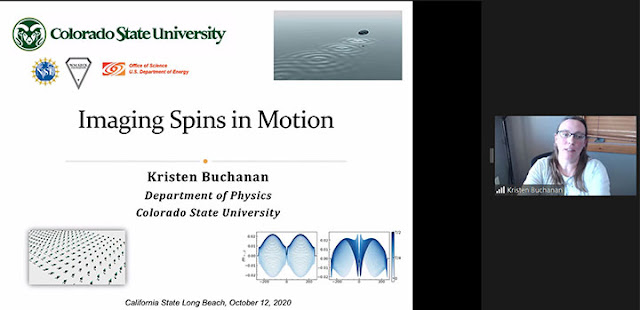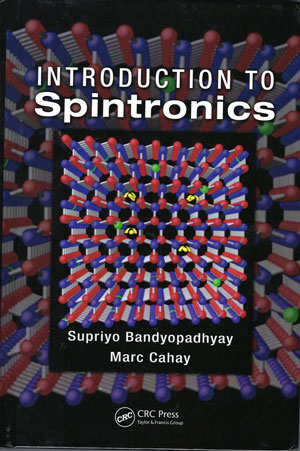Greetings from Palmia Observatory
Well here we are just after finishing up a fantastic set of presentations and discussion at the Mars Society 2020 Convention, but for now we need to go back and comment about the recent APS Far West Annual Meeting and on a recent physics colloquia.
First up, at the October 9-10 APS Far West meeting, while many other interesting topics were discussed, I found one presentation on molecular motors in biological systems quite interesting and will give some summary comments. Professor Carlos Bustamante, UCB, described some of the biological processes that use molecular motors to carry out the operations required by the cellular machinery.
 |
| Molecular Motors Presentation (Source: Carlos Bustamante, UCB, at APS Far West 2020 meeting) |
A molecular motor converts chemical energy into mechanical force and motion. They can push and pull on cellular structure and cause the cell to move. These motors exert both liner and rotary force and when directed along the cells internal cytoskeleton, which hardly shows up in microscopes, enables the cell to move.
 |
| Molecular Motors convert chemical energy to force and torque (Source: Carlos Bustamante, UCB, at APS Far West 2020 meeting) |
Molecular motors are used in many other internal processes of the living cell too. For instance, the double helix of DNA must be unwound so that the proteins encoded on each strand can be read and decoded. Molecular motors can provide the rotary torque needed to untwist the DNA strands. The example of Myosin V is particularly interesting in that it acts like a linear motor and transports a protein, one step at a time from one location in the cell to another location, along a microtubule. Each step or operation of the motor requires chemical energy input in the currency of one molecule of ATP.
 |
| Examples of molecular motors (Source: Carlos Bustamante, UCB, at APS Far West 2020 meeting) |
We all have seen videos showing how when a cell divides the pairs of chromosomes are separated and pulled to separate locations in the dividing cell. Molecular motors in combination with microtubules are arranged to pull each chromosome to their respective locations. Little motors also operate the rotary flagella on some microorganisms and even ATP, the energy currency used in the cell, is itself manufactured by a molecular motor that moves the precursor molecules around so that the right sequence of chemical operations is performed. Hmm, somehow the number of ATP produced by the rotary action must exceed the number consumed in its production?
 |
| More examples of molecular motors (Source: Carlos Bustamante, UCB, at APS Far West 2020 meeting) |
One interesting application of molecular motors is the insertion of the synthesized DNA/RNA into the viral capsid. When viruses are duplicated inside a living cell, the proteins for the capsid package are synthesized separately and then self assemble into the empty capsid just by electrostatic forces. The viral RNA/DNA is also synthesized separately in the cell and then has to be transported and inserted into the empty capsid. A molecular motor does this by forcing the RNA/DNA, base pair by pair, into the empty capsid. Then once the capsid is full, the virus is able to exit the cell and continue on its infective journey.
 |
| Insertion of DNA/RNA into viral capsids (Source: Carlos Bustamante, UCB, at APS Far West 2020 meeting) |
Professor Bustamante also described how the actual force or torque generated by these molecular motors is measured in the laboratory. Scientists can attach tiny fibers to a molecular motor and then measure the torque or force exerted by the action of the motor. The attached fibers are connected to pipettes that in turn are connected to some very precise force measuring instrument, like an atomic force microscope. The average force is in the 10-70 piconewton range.
 |
| Molecular Motors Presentation (Source: Carlos Bustamante, UCB, at APS Far West 2020 meeting) |
By measuring the force required to force the RNA/DNA into the capsid, the pressure of the interior of the capsid is estimated to be about 30 atmospheres. Wow, that is about 6 times higher than the pressure inside an unopened champagne bottle. You probably have seen videos of a bacteriophage positioning itself on a cell membrane and sort of like a hypodermic needle inject its RNA into the cell. Is it the high internal pressure that makes this possible?
 |
| Measured force of Molecular Motors (Source: Carlos Bustamante, UCB, at APS Far West 2020 meeting) |
Bustamante goes on to tell us that the molecular structure of the motors has been worked out and how they are constructed and how they operate is becoming very well known. As I recall, the RNA/DNA packaging motor operates analogously like a 5-phase electric motor, in that it takes 5 ATP molecules being consumed sequentially to make one complete rotation of the motor torque.
 |
| Bacteriophage packaging motor (Source: Carlos Bustamante, UCB, at APS Far West 2020 meeting) |
The presentation on molecular motors and how they operate and how they can generate such force and rotary motion too is really interesting. It seems so fascinating many of the necessary operations inside the cell require so much machinery to push and pull molecules from one location to another or internal cell components like vacuoles or chromosomes from one location or another. Each step of the motor requires chemical energy and I seem to recall hearing of overall efficiencies in the 20-60% range. Thank you for that wonderful tour through the land of molecular motors, Professor Bustamante.
Well, if you are excited about learning more about molecular motors and all of the associated biophysics check out this 2015 textbook, "Molecular Proteins and Molecular Motors: by Anatoly Kolomeisky.
 |
| Molecular Motors Textbook (Source: Anatoly Kolomeisky) |
Another interesting topic in physics came up in the CSULB Physics Colloquium, "Imaging Spins in Motion", presented by Professor Kristen Buchanan, Colorado State University. Condensed matter physics topics are normally not on my radar, but there are a lot of interesting discoveries being made there. For instance we are beginning to see how physicists can separate the charge like properties in materials from their spin like properties. Here we will go over how the spin of atoms can be observed and imaged.
 |
| Imaging Spins in Motion (Source: Kristen Buchanan, CSU, at CSULB Physics Colloquium) |
We know that modern electronics devices today rely on manipulating and moving electric charges through devices. But now, the spin of electrons and atoms is also coming under control and manipulation and offers new functions that were not possible by just controlling the charge.
 |
| Using charge and using spin (Source: Kristen Buchanan, CSU, at CSULB Physics Colloquium) |
Professor Buchanan then went into the experimental techniques that are being used to image spin. The technique is based on a special type of light scattering called Brillouin Scattering.
 |
| Imaging Spins in Motion (Source: Kristen Buchanan, CSU, at CSULB Physics Colloquium) |
Now, I couldn't remember anything about Brillouin scattering from any earlier studies, so this was a particularly new topic of interest to me. But as you can see in this next slide there are already many applications of using Brillouin scattering.
 |
| Applications of Brillouin Scattering (Source: Kristen Buchanan, CSU, at CSULB Physics Colloquium) |
As part of my "homework" I had to look up and see who was the scientist credited with discovering BLS. Well, as you might have guessed it was Leon Brillouin, a French solid state physicist, born in 1889 and died in 1969, who spent most of his career from 1949 in the US. Other details can be found on Wikipedia.
As we see below BLS is a measure of the inelastic scattering of photons from the quasi-particles, magnons and phonons. This is the area where the mathematics usually associated with high energy particle physics comes into play and is very useful in describing this type of scattering.
 |
| Brillouin Light Scattering (Source: Kristen Buchanan, CSU, at CSULB Physics Colloquium) |
In this next slide, Kristen introduces the concepts of particle creation and annihilation, so common in high energy particle physics and quantum field theory, and here we see the usefulness of the same mathematical framework in condensed matter physics.
 |
| BLS & Magnon creation/annihilation (Source: Kristen Buchanan, CSU, at CSULB Physics Colloquium) |
The laboratory techniques used to measure BLS and the spin of particles is shown below. It is a complicated combination of optical pathways and devices. I don't quite get all about how it works, but at least we see all of the complicated optics necessary to make the spin measurements.
 |
| Measuring BLS and spin (Source: Kristen Buchanan, CSU, at CSULB Physics Colloquium) |
So, that was a pretty interesting colloquium, even though most of it was way beyond my understanding but at least we got an introduction to Brillouin light scattering and how it is now possible to image the spin of particles and track the motion across time and space. Pretty neat; thanks for that Professor Buchanan!
Now if you want to understand a little bit more about how spin might be applied and useful in post-electronics type devices, check out this textbook, "Introduction to Spintronics." This is a great introduction to spin and quantum mechanics and examples of calculations that are at the level for engineering students and others just trying to get a sense of what the field is all about.
 |
| Introduction to Spintronics, 2008 (Source: S. Bandyopadhyay and M. Cahay) |
Until next time, and I promise to finally comment about the Mars Society 2020 convention, but now, here from our burrow, stay safe, as we recover more of our freedom,

No comments:
Post a Comment